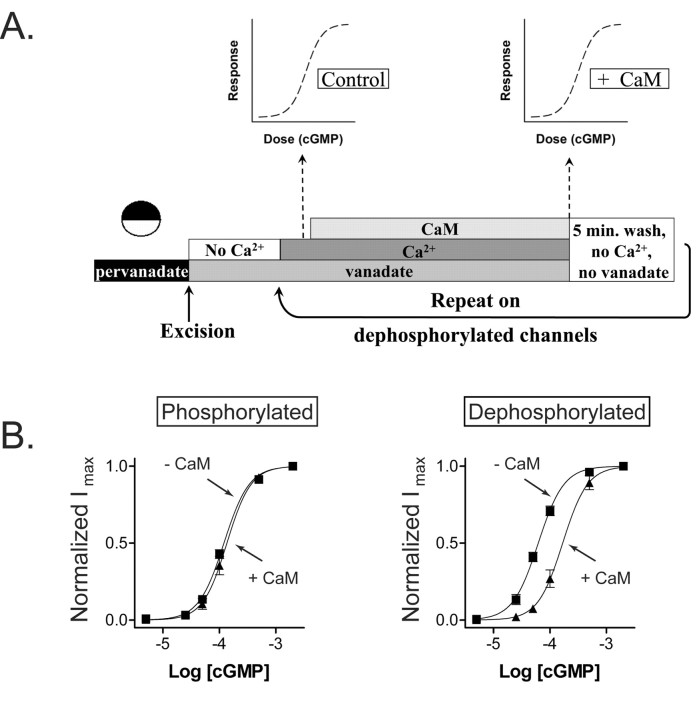Figure 3.
Dephosphorylation of rod CNG channels restores calmodulin inhibition. A, Experimental paradigm for studying the effect of tyrosine phosphorylation on Ca2+/CaM inhibition. Xenopus oocytes expressing rod CNG channels are preincubated with 100 μm pervanadate to block endogenous PTPs and maximize channel phosphorylation. An inside-out patch is excised into Ca2+-free solution to remove endogenous Ca2+-binding proteins. After superfusing with 50 μm Ca2+ plus vanadate, channel sensitivity in the absence of CaM is assessed by obtaining cGMP dose-response data. CaM at 250 nm is then added, and a second dose-response relationship is obtained. Finally, vanadate and Ca2+ are washed away for 5 min to allow dephosphorylation, and the above protocol is repeated. B, Dose-response relationships of cGMP activation measured with and without Ca2+/CaM under conditions that promote phosphorylation (left) and dephosphorylation (right) of rod CNG channels using the above paradigm.

